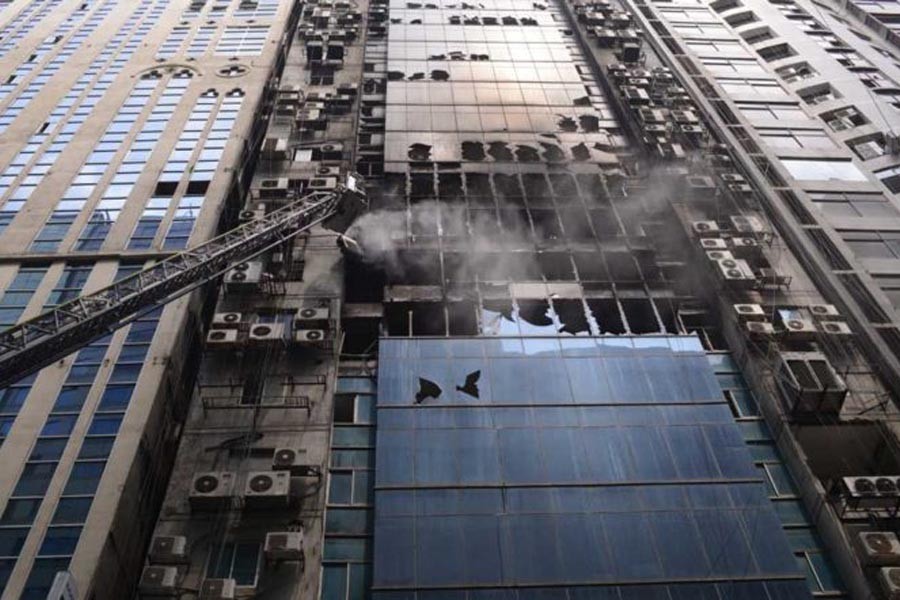
Published :
Updated :

Since March 28, 2019 when the Banani FR Tower fire broke out killing 26 and injuring nearly 100 people, there have been at least five fire incidents across Dhaka. Most of these occurred in residential and commercial areas of the capital. Fortunately, no casualties were reported in any of these.
The frequency of the incidents drove many people to come up with their own theories on the social media platforms. However, the stark reality is that many buildings in Dhaka are at the high risk of incurring heavy losses through human casualties and property damage from potential fire incidents.
Survivors of the FR Tower have told the probe committees that there was a flash followed by a blast on the seventh floor of the building. After that, the fire spread out very fast, trapping people on that floor and the floors above it. It is still being speculated that the fire could have originated from a short-circuit incident.
It has been reported that construction of the top four floors of the 22-storey building was not approved by the concerned authority (RAJUK). The building did not have fire-protected staircase and fire safety equipment. Worse, the emergency exit was shut.
Most urban experts have claimed that the number of casualties and injuries would have been far less if these factors were properly ensured by the building owner and the concerned authorities.
Most of the people trapped in the building called out to others for help from neighbouring buildings. Few good Samaritans from these buildings risked their lives to help some of the victims in whatever ways they could.
One thing that seems puzzling is: how did the building owners on that particular road obtain permission to construct their buildings so close to each other without even the minimum space as required by law? Had the blaze lingered on for some time more, chances were high that the nearby buildings would not have been spared.
Emergency fire-fighting teams were delayed by traffic congestion. When they reached the spot, it took their vehicles awhile to reach the building as impassioned crowds who gathered at the scene were blocking the path. Most people standing on the roads helped the fire-fighters eventually. Maybe their help would have been more effective had they received some training to respond to in such disasters.
When the trapped victims of the building tried to escape, some dropped to their deaths on the paved road. Onlookers could have tied up bed-sheets or other fabrics together to form makeshift trampolines that could have been used to somehow protect the victims from fatalities. Such quick thinking could have been possible, if emergency situation trainings were provided to the people in Dhaka by authorities.
There are many such buildings spread out all over Dhaka. Many new buildings have fire safety tools and equipment. Fewer have fire exits. But maintenance of these in most buildings is not done regularly. Also, occupants of these buildings lack the knowledge of using them.
It is a positive sign that the government has decided to enhance the capacity of Bangladesh Fire Service and Civil Defence in order to ensure security of the capital. On March 30, Home Minister Asaduzzaman Khan said that the government is working to improve the capacity of fire service. Advisers will soon be appointed and based on their suggestions, the fire service department will be recast, said the home minister.
While the government is taking steps to ensure security, the onus also falls on the citizens of Dhaka to ensure and maintain safety and security in order to prevent any urban disaster.


 For all latest news, follow The Financial Express Google News channel.
For all latest news, follow The Financial Express Google News channel.